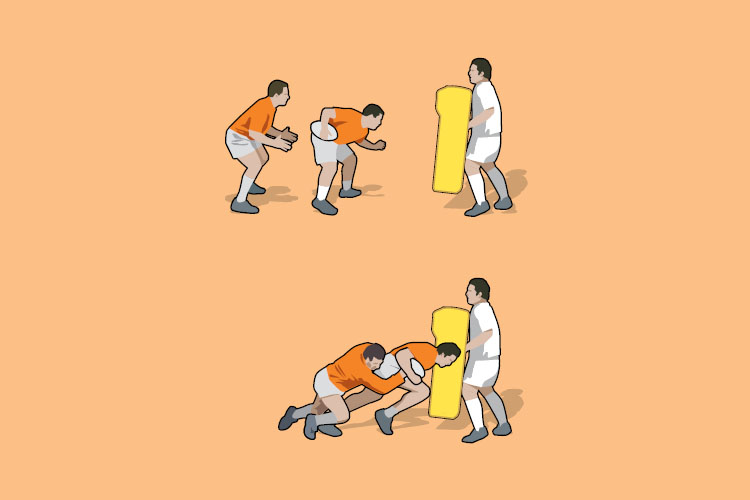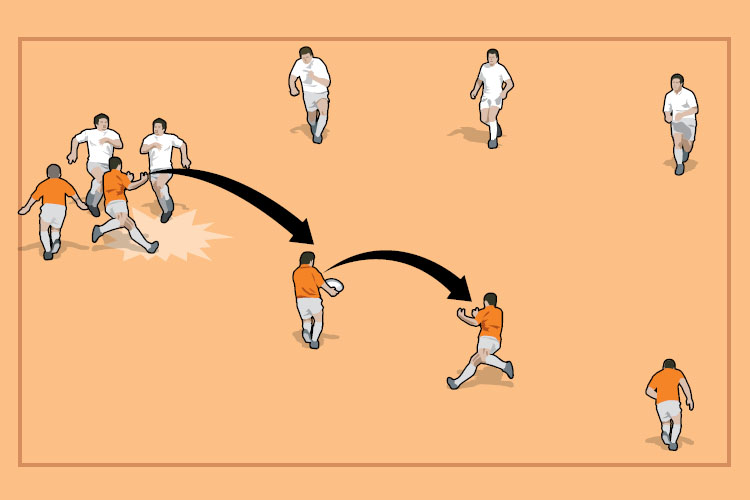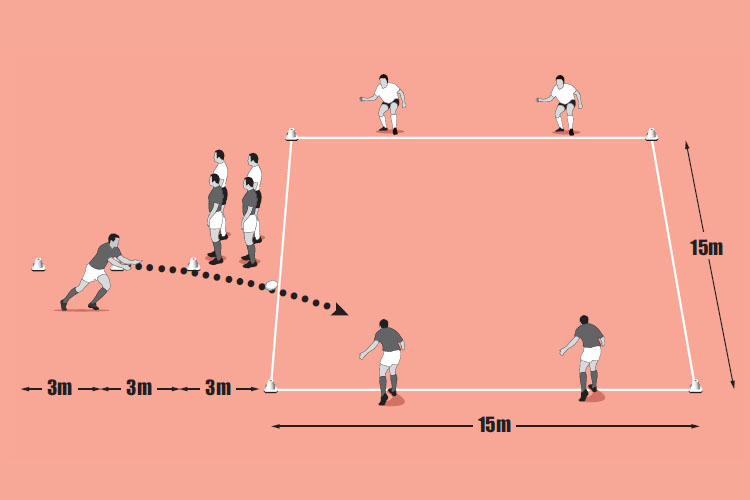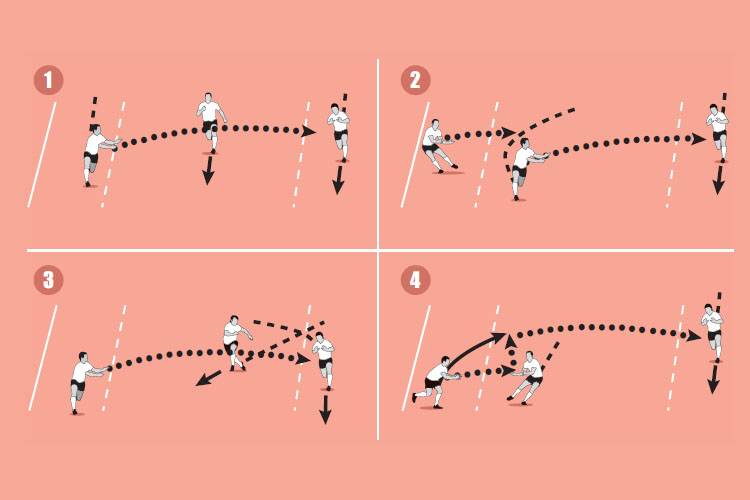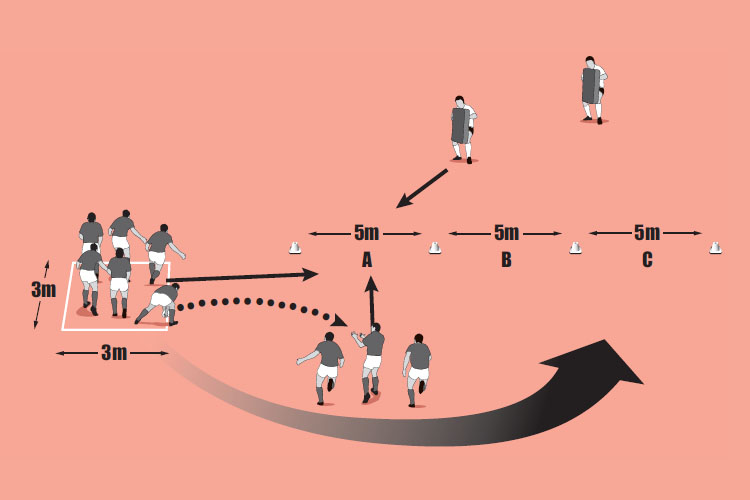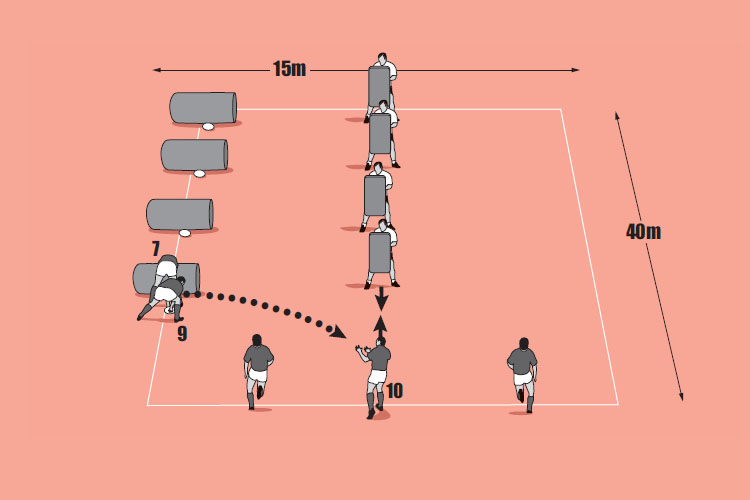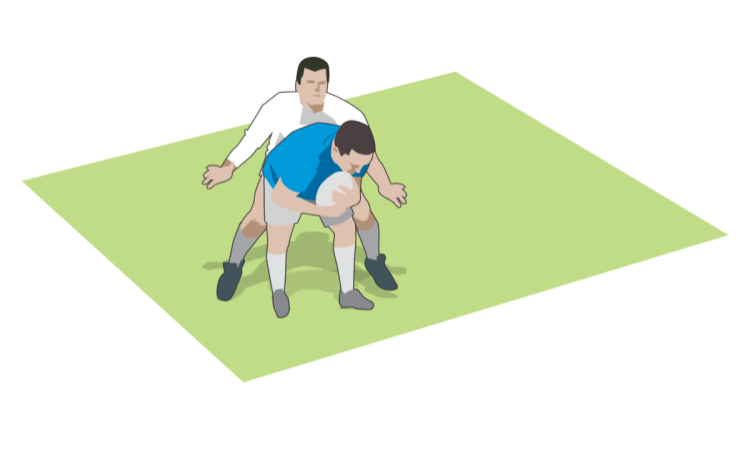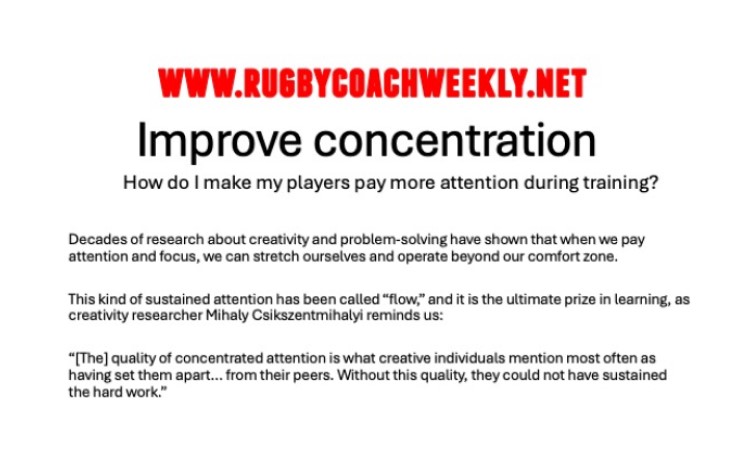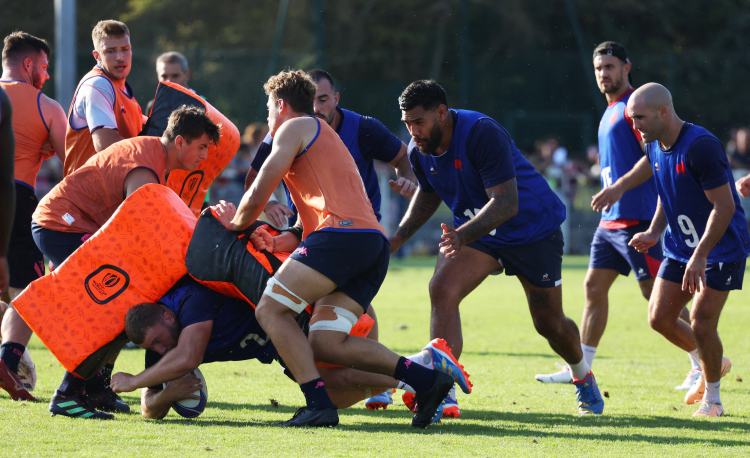You are viewing
1 of your 2 free articles
Latch and smash
Here is an easy-to-coach contact technique that will help break through defensive lines. It is especially good if you have a smaller team, a support player simply latches on to the ball carrier and pushes him through the defender.
Warm up time: 5
Session time: 6-9
Development time: 6-9
Game time: 15-20
Warm down time: 7
What to think about
This is a great technique for sides who are smaller than their opponents. It creates a two-body drive against one defender. It is essential the ball carrier goes forward into contact and does not wait for the “latcher” who has to be dynamic and get in position quickly, telling the ball carrier he is going to do this. The “latcher” might misfire on occasions (perhaps more than once in a game), but at least he is in close support in the contact area.set-up
- Ball carrier: Stay on feet in contact and keep driving forward.
- Support player: Drive the ball carrier through the contact, either binding onto their hips or back.
What you get your players to do
Put a ball carrier about a metre from at least one ruck pad holder. Put a support player about a metre behind. The ball carrier drives into the pad or pads. On impact, the support player should drive on to the ball carrier. This is not an exact science so let the players have plenty of goes to sort out what works best for them. If the ball carrier falls over, the support player can choose whether to protect the ball or pick and go.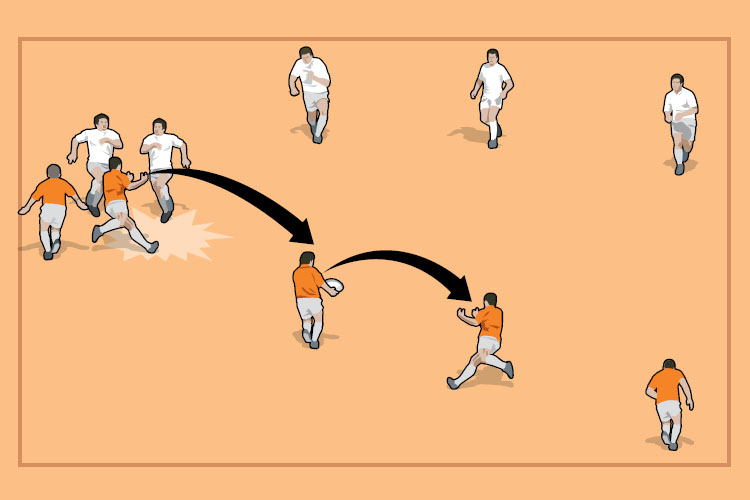
Development
Have a player pass the ball to a receiver who drives into a gap between two ruck pads. A supporting player starts at different points away from the ball carrier. He needs to time his run to offer the best support to drive the ball carrier through the pads.Related Files
Game situation
Play a game of two pass, two tacklers. Play at least five-a-side. The tacklers cannot compete for the ball once the ball carrier is on the ground but can wrestle the ball from a maul. Only tacklers can go for the ball carrier. There is no offloading. Once the maul or tackle is over, the attack can only pass the ball twice. The ball is turned over for mistakes and infringements.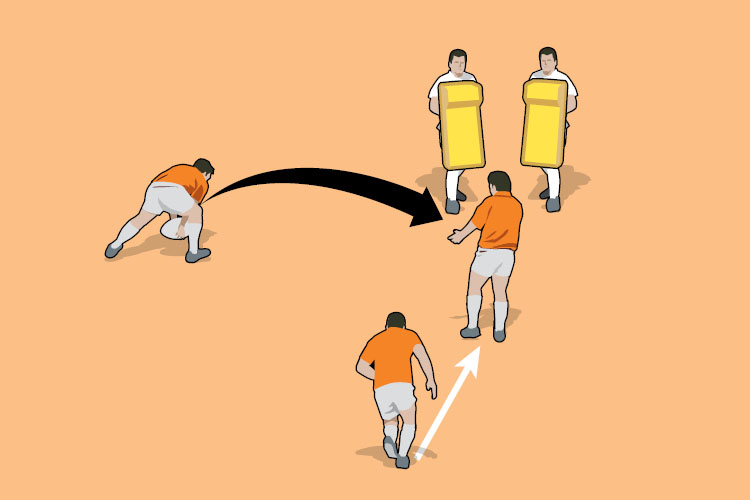
What to call out
- “Drive on to the hip”
- “Keep square in the contact, so both players are looking and driving forward”
- “Ball carrier, don’t wait for the support – he will be there!”
Newsletter Sign Up
Coaches Testimonials

Gerald Kearney, Downtown Las Vegas Soccer Club

Paul Butler, Florida, USA

Rick Shields, Springboro, USA

Tony Green, Pierrefonds Titans, Quebec, Canada
Subscribe Today
Be a more effective, more successful rugby coach
In a recent survey 89% of subscribers said Rugby Coach Weekly makes them more confident, 91% said Rugby Coach Weekly makes them a more effective coach and 93% said Rugby Coach Weekly makes them more inspired.
Get Weekly Inspiration
All the latest techniques and approaches
Rugby Coach Weekly offers proven and easy to use rugby drills, coaching sessions, practice plans, small-sided games, warm-ups, training tips and advice.
We've been at the cutting edge of rugby coaching since we launched in 2005, creating resources for the grassroots youth coach, following best practice from around the world and insights from the professional game.
